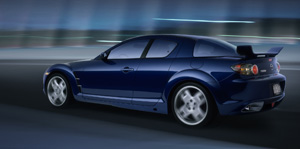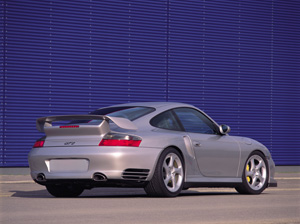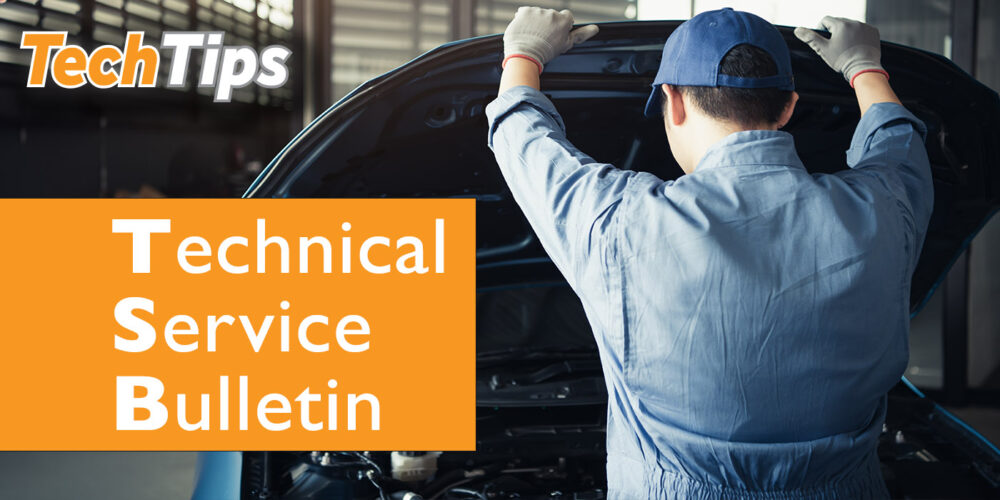By Steve LaFerre
Senior Editor
TIRE REVIEW Magazine
Some of the top tire dealers I’ve encountered are those who elect to understand virtually everything they can about a tire, its performance level, its construction features, its overall diameter and its OE assigned position. This includes corner-by-corner knowledge, as well as being front-to-rear axle savvy.
When we drive past a tire dealership that has a BMW, a Lamborghini, a Corvette and a Ford Cobra parked on the lot, we take notice. The very sight of these vehicles next to daily drivers like the Fords and Chevys most of us own sends a tacit message that this dealership knows its stuff.
It is non-verbal communication at its finest. “Wow, this dealership must be good if the owners of such exotics trust their rides with the techs,” a potential customer thinks as they drive by. That is not only the logical conclusion to draw, but it is the correct conclusion. It means that if the techs inside know how to take care of the 12-cylinder Lamborghini outside, they can certainly take care of an Impala.
By the way, 11 new Lambo Reventons will be headed to these shores this year. We are willing to speculate based on its platform that the tire sizes will probably be 245/35R18 on the front axle with 335/30R18 bringing up the rear.
This exotic’s 650 ponies send it from zero to 60 mph in 3.4 seconds. What a tire dealer needs to know is that there is a 3-inch difference in tire width from front to rear, designed to transmit horsepower to the ground and stop the back end from coming around to meet the front.
“Heck, I’ll never see one of those at my dealership,” you’ll say. You may be right, but the vehicle just described is only an example. Let’s try something more common, like a 2006 Chevrolet HHR.
Did you know the front size tire is a P255/45R19 and there is a P295/4020 on the rear? You can lay down a bet the owner doesn’t know; that job belongs to you. Whether it’s pure cosmetics or a true performance requirement, a straight OE replacement or replacement market upgrade, staggered fitments require a keen eye and attention to details.
Still, GM engineers designed this model to perform up to the standard of its design intent. When a turbo is popped onto the engine of this less than heavy vehicle, the same kinds of vehicle dynamics will occur as on the Lambo. In other words, you need to bring your “A” game to every front-rear stagger fitment. Getting it right means a customer for life. Getting it wrong, well, you can figure that out.
Here’s a quick look at some common stagger fitments you will likely see:
• 2008 Ford Mustang GT500 (front P255/45ZR18, rear P285/40ZR18)
• 2006 Ford Fusion GT (front P235/45ZR18, rear P315/40ZR19)
• 2008 Corvette Z06 (front P275/35ZR18, rear P325/30ZR20)
• 2008 Jeep Grand Cherokee SRT8 (front 255/45R20, rear 285/40R20)
• Plymouth Prowler (front P225/45R17, rear P295/40R20 and these tires are directional run-flats)
• 2007 BMW 650i (front 245/45R18, rear 275/35R20. Optional sport package requires 245/40R10 front and 275/3519 rear).
 There are several messages here. First, the owners of most of the vehicles don’t know a thing about tire sizes, nor do they care. A few will, but only a precious few. It’s a fact; we’re not trying to be cute. A dealer friend told me at least 50% of such drivers don’t understand a thing about tire sizing.
There are several messages here. First, the owners of most of the vehicles don’t know a thing about tire sizes, nor do they care. A few will, but only a precious few. It’s a fact; we’re not trying to be cute. A dealer friend told me at least 50% of such drivers don’t understand a thing about tire sizing.
Another fact: This kind of tire service is now, and always will be, a very small percentage of your business. So why pursue it? Well, other than trying to attract exotics or muscle cars, this kind of business comes to you – so you better be ready. What’s more, when existing or potential customers see these vehicles inside your service bays or out on the lot they know you must have invested heavily on the training and equipment necessary to deliver the best tire service.
You can’t possibly service such vehicles without a modern, up-to-date shop; top-notch equipment is a must. After all, if you are well enough equipped to change tires on a $100,000 plus car, you are good enough to change tires on a $30,000 vehicle. If you follow this advice, if you make a decision to service all types of vehicles, it builds instant confidence from all of your customers. You can take that to the bank.
Pleasing the Enthusiasts
Take the guy who brings in his 2007 Pontiac GXP V8. The tires on his front axle are size 255/45R18 with 225/50R18s on the rear. In other words, the tires on the front axle are three inches wider than the tires on the rear axle. Odd, but Pontiac engineers have a good reason for doing so: torque steer.
This is a powerful, yet affordable car that must push 325 ft. lbs of torque to the front tires, whose job it is to transmit that much force to the ground without ending up in a cornfield. Making things more complicated is the fact that these tires are directional and 65% of the weight of this vehicle is on the front axle.
Translation: You can only rotate these tires left to right and even that isn’t a great idea. It’s better to play it safe and put on new rubber because the owner of this car is more interested in performance than the price of gas.
Here’s another twist. What if the tires are asymmetric and directional to boot? Now you’re stuck. You can’t rotate these tires period. Your best – and only – bet is to put on four new tires. The die-hard enthusiast tire dealers will stick with the same size, the same brand, the same tread design…everything. They see it as their job to follow the specs spelled out by the OEM engineer.
Common Sense Meets Science Virtually all Porsches come with a mid- or rear-engine configuration, with massive amounts of horsepower and torque. The larger tire is placed on the rear axle to handle the load, torque and horsepower. It also helps generate higher cornering force, which helps keep the vehicle from becoming an amusement park ride. Vipers also come so equipped. It’s all about traction capability and vehicle balance.
Virtually all Porsches come with a mid- or rear-engine configuration, with massive amounts of horsepower and torque. The larger tire is placed on the rear axle to handle the load, torque and horsepower. It also helps generate higher cornering force, which helps keep the vehicle from becoming an amusement park ride. Vipers also come so equipped. It’s all about traction capability and vehicle balance.
Cosmetics enter the picture occasionally, so you need to be aware that some of your customers want the look even if it’s not warranted. In such cases, give the guy a break by selling him symmetrical tires that can be rotated. Explain what you are doing and you’ll be a hero.
However, when the vehicle placard and owner’s manual calls for a three-inch wider tire on the rear than the front, don’t ask questions, just do it. There are sound engineering reasons for the stagger. The wider tire, for example, will also help counter oversteer and in so doing will wear out at a rate that is three-to-one when compared to the tire on the front axle.
In other words, on some marquees you’ll replace three rear tires before you’ll replace the front tires. You also need to be able to tell enthusiast customers that you are prepared to replace his/her $1,500 wheel if something happens to it, and the owner may want that guarantee in writing.
That means you need to be very good at what you do. When you work on the exotics you are sending a very clear message that you can handle any type of vehicle that is driven into your lot. Think of these customer rides as free bait you can use to troll for customers.
If you are “the” knowledgeable performance tire dealer in your market area, enthusiast news travels fast. They’ll seek you out for their needs and expect nothing less than the best. Deliver sound advice, good products and great service, and everyone in town will know you as the real go-to dealer.














